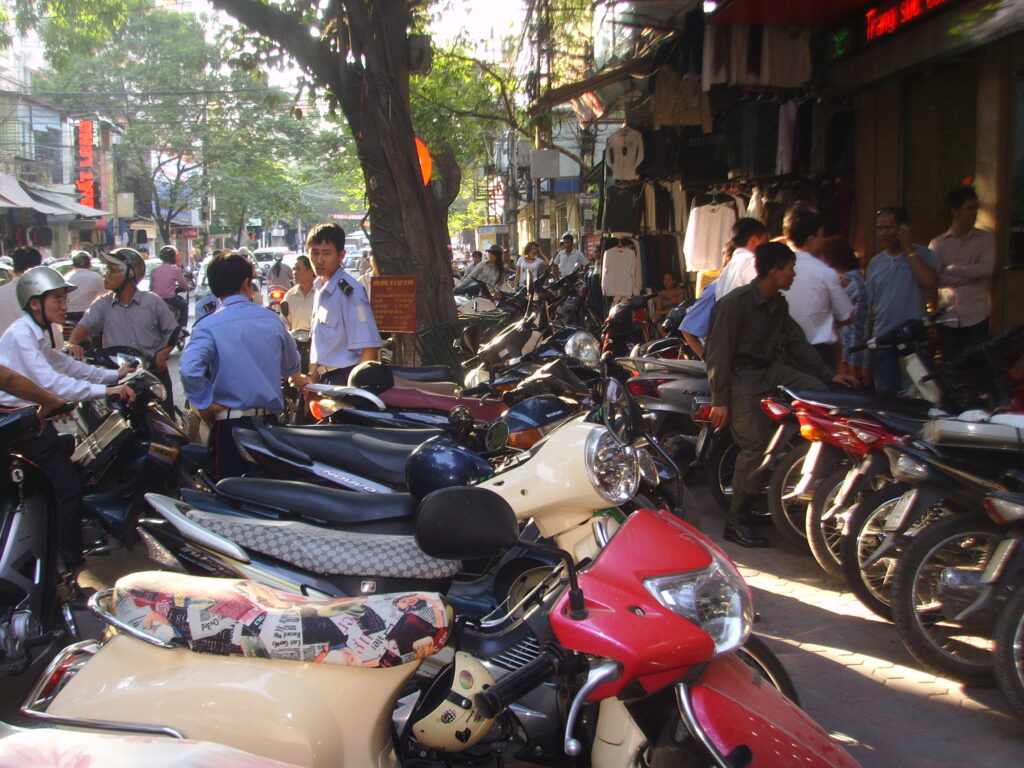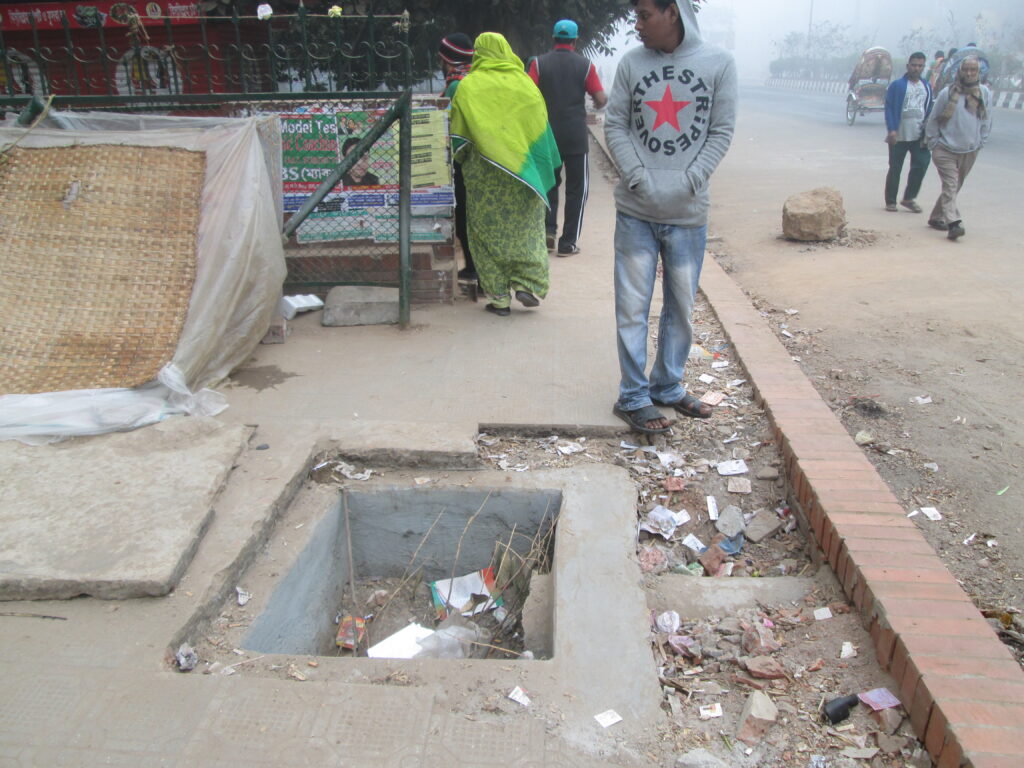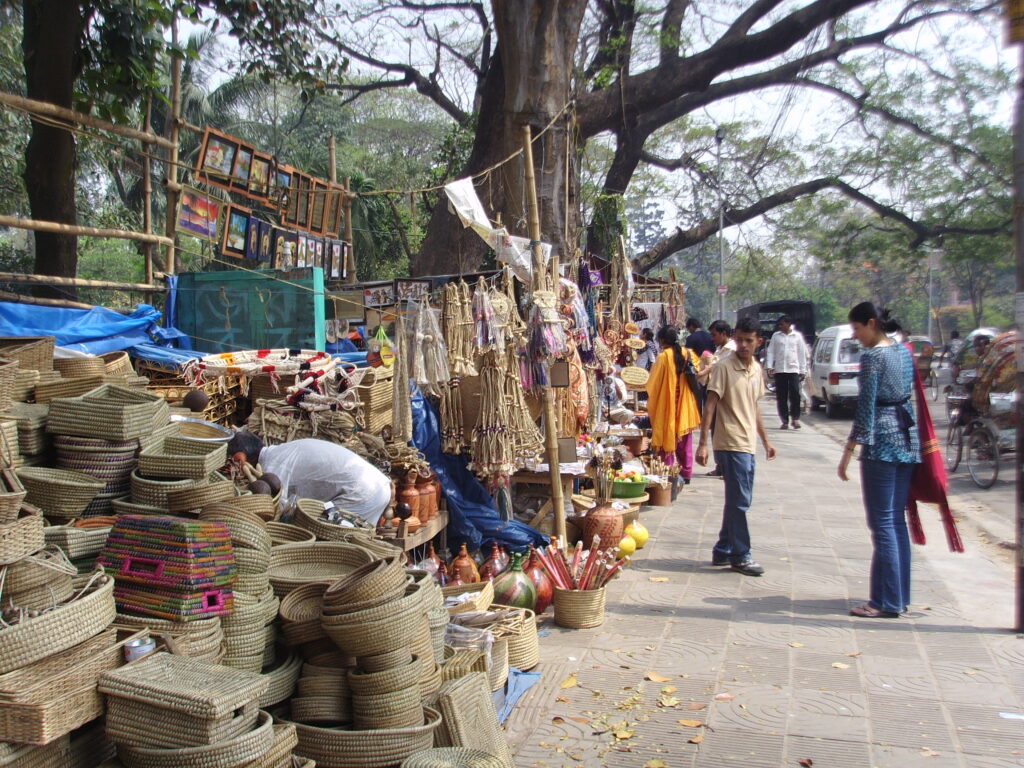28 September 2023 In Active Mobility, Asia, Blog Post, Sustainable Development
Playing Cat and Mouse with Cars: Overcoming the Daily Struggles of Asian Pedestrians
by Debra Efroymson, Executive Director, Institute of Wellbeing, Bangladesh and Senior Advisor, HealthBridge.
In collaboration with Phaeba Abraham and Ding Dang Hai from Healthbridge and Bronwen Thornton from Walk21.
Walking is the perfect mode of transport. It burns no fuel, generates no carbon, creates no danger to others, requires no terminal capacity (parking), provides needed physical activity, requires no expense and makes cities livelier and more sociable. People on foot are more likely to visit local shops than those driving by on cars or motorcycles and thus help support the local economy. And yet, despite all the benefits to individuals, small businesses, the community and the environment, too often people on foot are punished rather than encouraged.
What do I mean by punished? In Bangkok, those of us out walking are subjected to the noise and fumes of all the cars and motorcycles, most often waiting inordinately long times to cross the street. In Hanoi, those on foot often must compete for space on the sidewalk with parked vehicles. Crossing the street can be terrifying, and the air stinks. In Dhaka, the air is filthy. The constant curb cuts for cars means that we are constantly stepping up and down where there actually is a footpath. Again, walking is associated with the noise, smell, and danger of cars. In India, crossing the road can be a daunting and dangerous task. “Playing cat and mouse with cars” would accurately describe the experience of pedestrians in many Asian cities.


Many years ago, I visited a government transport agency in Dhaka. The man in charge told me that it was the first time that someone wished to talk to him about walking, despite walking accounting for roughly a third of trips in the country. According to policymakers here and elsewhere, transport is motorised (read: cars); walking and cycling are somehow invisible. The few concessions to walking mainly take the form of removing vendors from footpaths (though vendors provide safety and attraction to those on foot) and forcing pedestrians to use bridges to cross the roads. Just how unpopular are those bridges? At one point, the local government threatened to put people in jail for 24 hours if they failed to use a bridge where one was available. If you have to threaten people with jail to make it “safe” to cross the street, then you’re going about it all wrong.

I’ve been working on urban planning and transport policy for two decades. I’ve heard pedestrians blamed for causing congestion. Pedestrians are blamed for getting themselves killed by cars. If this doesn’t anger you, consider those who blame women for getting sexually harassed on the roads and who suggest that women should remain indoors (because you can’t control the men). Now apply that to pedestrians and their battles with car drivers. Or, in fewer words: stop blaming the victims!
Governments have seemingly endless funds to build car-based infrastructure such as flyovers and elevated expressways but show little interest and have few or no funds for fixing footpaths, planting trees, providing water fountains and public toilets, or any of the other amenities that would make walking more pleasant. Trees and water fountains become ever more important as the climate crisis further heats up our cities.
Difficult as it is for the young and able-bodied to walk in Asian cities, how about small children, the elderly, and those with disabilities? Policymakers seem not to grasp the importance of children’s independent movement, including their ability to walk or cycle safely to school, for their physical, mental, and social wellbeing. The elderly should be able to participate in outdoor activities rather than be trapped at home, yet their inability to move quickly can be life-threatening on urban streets. And heaven forbid you have a disability—unable to see the traffic, hear the horns, or walk and dodge rapidly. Do we not value any of these people and their contributions to society?
As the Asian population continues to grow in size and wealth, we need to stop assuming that more travel is always better. The upcoming climate talks taking place at the United Nations Climate Change Conference (COP28) in Dubai should bring momentum to address these critical mobility issues and break the norm. We need to stop generating a need to travel further and thus trying to accommodate people’s desire for endless mobility. We need a shift to localisation, to 15-minute neighborhoods, to ensuring that people can access what they need closer to their residences. Only through managing demand, through abandoning the belief that more mobility is always better, through better links with public transport for longer journeys and through appreciation of the many benefits of walking, can we start to solve the traffic congestion, pollution, and road crashes that plague Asian cities—and to take a real step forward to decarbonise transport.
Debra Efroymson
Debra Efroymson is Executive Director of the Institute of Wellbeing, Bangladesh and Senior Advisor at the Canadian public health NGO HealthBridge. She has given a TEDx talk on carfree cities.